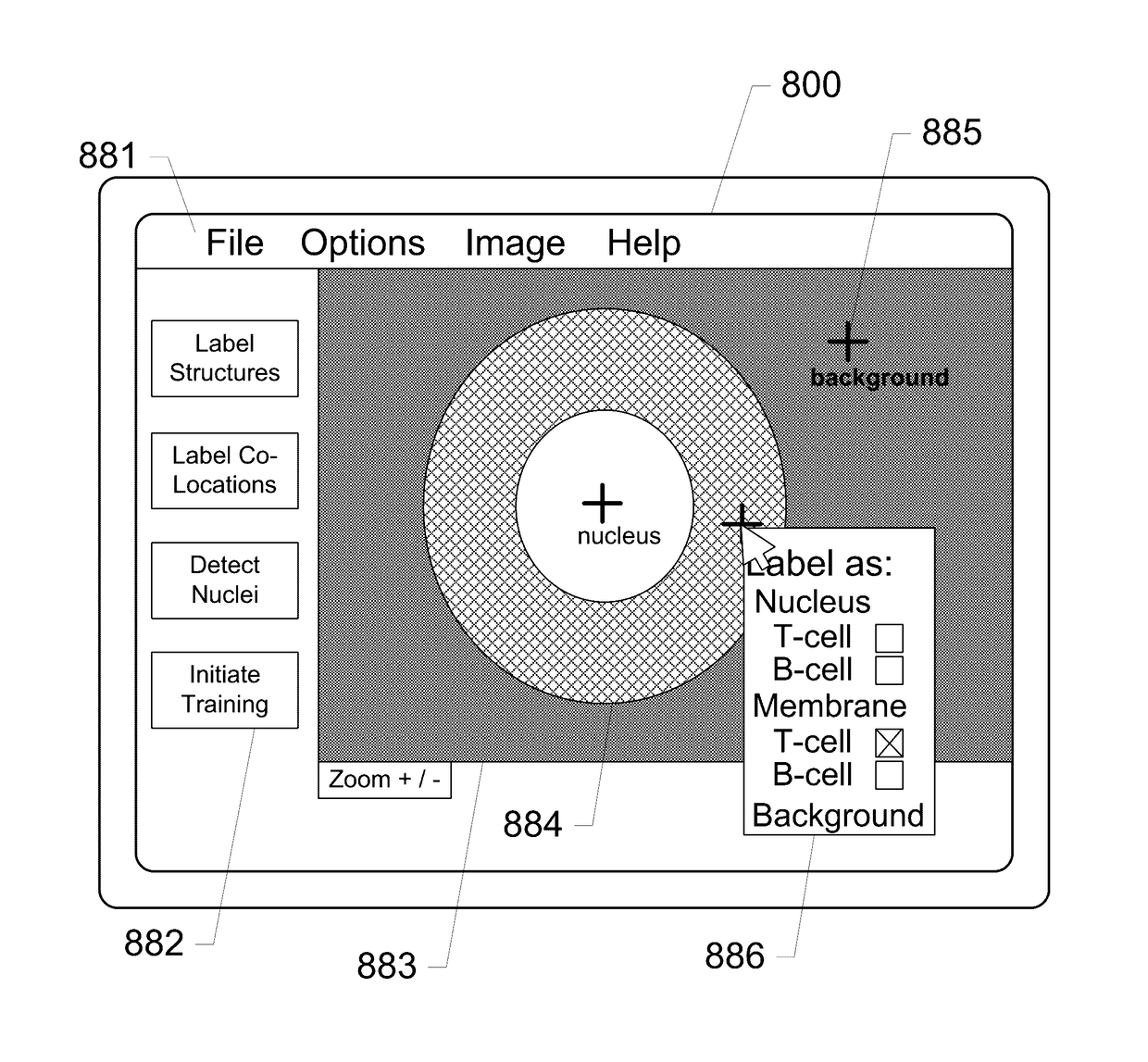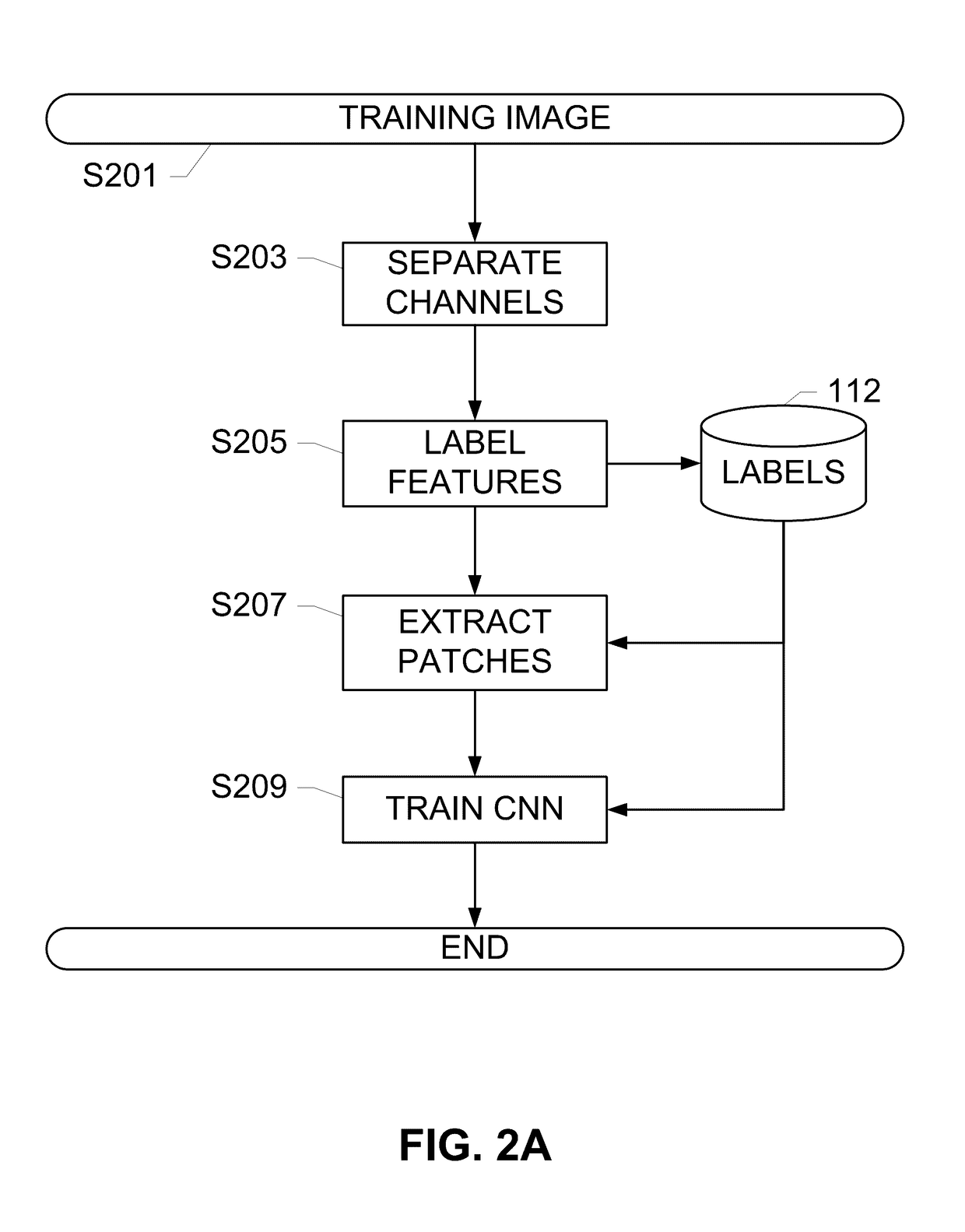Systems and methods for detection of structures and/or patterns in images
a system and image technology, applied in the field of image analysis, can solve the problems of limiting the detection technique to automatic nucleus rather than membrane detection, subject to intra- and inter-individual variability, and reducing so as to reduce the computational burden, increase the stability of the cnn, and reduce the number of training images
- Summary
- Abstract
- Description
- Claims
- Application Information
AI Technical Summary
Benefits of technology
Problems solved by technology
Method used
Image
Examples
Embodiment Construction
[0036]The subject disclosure solves the above-identified problems by presenting systems and computer-implemented methods for automatic detection of image structures, for example, cellular structures, including retrieving individual color channels from a multi-channel image and providing one or multiple individual channels or portions of image data from the one or more multiple individual channels as input for a cell detector that is trained using a convolutional neural network to identify the immune cells in one or multiple channels of the image that corresponds to an immune cell marker or other target structure such as a nucleus. The multi-channel image may be an RGB image obtained from a brightfield scanner, an image from another color space such as Lab, a multi-channel image from a multi-channel brightfield or darkfield scanner, a fluorescent image from a multi-spectral imaging system, a darkfield image, or any other multi-channel image. In some embodiments the image may be an im...
PUM
 Login to View More
Login to View More Abstract
Description
Claims
Application Information
 Login to View More
Login to View More - R&D
- Intellectual Property
- Life Sciences
- Materials
- Tech Scout
- Unparalleled Data Quality
- Higher Quality Content
- 60% Fewer Hallucinations
Browse by: Latest US Patents, China's latest patents, Technical Efficacy Thesaurus, Application Domain, Technology Topic, Popular Technical Reports.
© 2025 PatSnap. All rights reserved.Legal|Privacy policy|Modern Slavery Act Transparency Statement|Sitemap|About US| Contact US: help@patsnap.com



